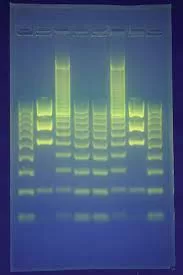Umea, Sweden: In a groundbreaking revelation, researchers at Umea University have uncovered a potential game-changer in the battle against muscular dystrophies, a debilitating group of genetic disorders causing muscle weakness and reduced life expectancy. Led by Professor Fatima Pedrosa Domellof and Associate Professor Jonas von Hofsten, the team identified a specific gene, fhl2b, that exhibits remarkable potential in preventing muscle breakdown associated with these conditions.
Muscular dystrophies, arising from mutations in an individual’s genes, have long posed a formidable challenge in the medical community due to the lack of effective treatments. However, this latest discovery offers a glimmer of hope in the fight against these devastating diseases.
The crux of the study lies in the unique role of the fhl2b gene in safeguarding muscles from degeneration. Unlike other muscles in the body, the gene is expressed exclusively in eye muscles throughout an individual’s life. This peculiarity has intrigued researchers for years, particularly as individuals afflicted with muscular dystrophies often experience muscle atrophy throughout their bodies while their eye muscles remain relatively unscathed.
To unravel the mystery behind this phenomenon, the team employed innovative genetic techniques, including the Nobel Prize-winning Crispr/Cas9 genetic scissors, to manipulate zebrafish models. Through meticulous experimentation, they demonstrated that augmenting the expression of the fhl2b gene significantly bolstered muscle resilience, particularly in zebrafish models exhibiting Duchenne muscular dystrophy, a severe form of the condition.
Professor Domellof underscored the significance of their findings, stating, “The eye muscles serve as both a window into understanding the disease and a potential avenue for developing treatments that could benefit the entire body.” Indeed, the promising results pave the way for further investigations into leveraging the fhl2b gene and its associated protein to mitigate the progression of muscular dystrophies.
While acknowledging the long road ahead, Associate Professor von Hofsten emphasized the transformative potential of their discovery in shaping future therapeutic interventions. “While there is much work to be done before new treatment methods materialize, these results provide a clear roadmap for advancing research aimed at slowing down the agonizing progression of this disease,” he affirmed.
Published in the esteemed journal Nature Communications, this study marks a significant leap forward in our understanding of muscular dystrophies and offers renewed hope to countless individuals and families affected by these debilitating conditions. As researchers continue to unravel the intricacies of the fhl2b gene, the prospect of effective treatments for muscular dystrophies looms closer than ever before.












